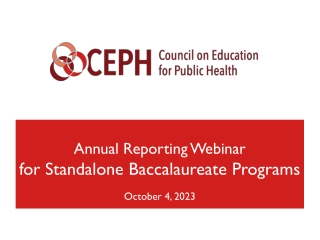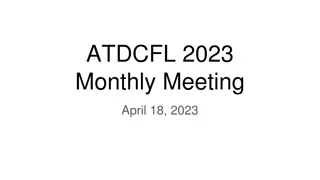
Hypertension and Treatment Options
Hypertension is defined by elevated blood pressure levels and can lead to serious health complications like heart disease and stroke. This article explores the causes, risks, and treatment options for hypertension, including diuretics and adrenoceptor blocking agents.
Download Presentation

Please find below an Image/Link to download the presentation.
The content on the website is provided AS IS for your information and personal use only. It may not be sold, licensed, or shared on other websites without obtaining consent from the author. If you encounter any issues during the download, it is possible that the publisher has removed the file from their server.
You are allowed to download the files provided on this website for personal or commercial use, subject to the condition that they are used lawfully. All files are the property of their respective owners.
The content on the website is provided AS IS for your information and personal use only. It may not be sold, licensed, or shared on other websites without obtaining consent from the author.
E N D
Presentation Transcript
Hypertension is defined as either a sustained systolic blood pressure of greater than 140 mm Hg or a sustained diastolic blood pressure of greater than 90 mm Hg. Hypertension results from increased peripheral vascular arteriolar smooth muscle tone, which leads to increased arteriolar resistance and reduced capacitance of the venous system . Chronic hypertension can lead to heart disease and stroke, the top two causes of death in the world. Hypertension is also an important risk factor in the development of chronic kidney disease and heart failure.
TREATMENTS: 1. DIURETICS The initial mechanism of action of diuretics is based upon decreasing blood volume, which ultimately leads to decreased blood pressure. Low-dose diuretic therapy is safe, inexpensive, and effective in preventing stroke, myocardial infarction, and heart failure. Routine serum electrolyte monitoring should be done for all patients receiving diuretics Thiazide diuretics Loop diuretics Potassium-sparing diuretics The loop diuretics (furosemide, torsemide) act promptly by blocking sodium and chloride reabsorption in the kidneys. These agents are rarely used alone to treat hypertension, but they are commonly used to manage symptoms of heart failure and edema.
2. -ADRENOCEPTORBLOCKING AGENTS. -Blockers are a treatment option for hypertensive patients with concomitant heart disease or heart failure. The -blockers reduce blood pressure primarily by decreasing cardiacoutpu. The prototype -blocker is propranolol which acts at both 1 and 2 receptors(non selective). Selective blockers of 1 receptors, such as metoprolol are among the most commonly prescribed -blockers. Nebivolol is a selective blocker of 1 receptors, which also increases the production of nitric oxide, leading to vasodilation. The selective -blockers may be administered cautiously to hypertensive patients who also have asthma. The nonselective - blockers, such as propranolol and nadolol, are contraindicated in patients with asthma due to their blockade of 2-mediated bronchodilation.
Therapeutic uses The primary therapeutic benefits of -blockers are seen in hypertensive patients with concomitant heart disease, such as supraventricular tachyarrhythmia (for example, atrial fibrillation), previous myocardial infarction, angina pectoris, and chronic heart failure. Pharmacokinetics The -blockers are orally active for the treatment of hypertension. Propranolol undergoes extensive and highly variable first-pass metabolism. Oral -blockers may take several weeks to develop their full effects.
Adverse effects 1. Common effects: The -blockers may cause bradycardia hypotension, and CNS side effects such as fatigue, lethargy, and insomnia . The -blockers may decrease libido and cause erectil dysfunction, which can severely reduce patient compliance. 2. Alterations in serum lipid patterns: Non cardio selective -blockers may disturb lipid metabolism, decreasing high-density lipoprotein cholesterol and increasing triglycerides. 3. Drug withdrawal: Abrupt withdrawal may induce angina, myocardial infarction, and even sudden death in patients with ischemic heart disease. Therefore, these drugs must be tapered over a few weeks in patients with hypertension and ischemic heart disease.
3. ACE INHIBITORS The ACE inhibitors, such as enalapril and lisinopril , are recommended as first-line treatment of hypertension in patients with a variety of compelling indications, including high coronary disease risk or history of diabetes, stroke, heart failure, myocardial infarction, or chronic kidney disease. A. Actions The ACE inhibitors lower blood pressure by reducing peripheral vascular resistance without reflexively increasing cardiac output, heart rate, or contractility. These drugs block the enzyme ACE which cleaves angiotensin I to form th potent vasoconstrictor angiotensin II. B. Therapeutic uses. ACE inhibitors slow the progression of diabetic nephropathy and decrease albuminuria and, thus, have a compelling indication for use in patients with diabetic nephropathy. Beneficial effects on renal function may result from decreasing intra glomerular pressures, due to efferent arteriolar vasodilation. ACE inhibitors are a standard in the care of a patient following a myocardial infarction and first-line agents in the treatment of patients with systolic dysfunction. Chronic treatment with ACE inhibitors achieves sustained blood pressure reduction, regression of left ventricular hypertrophy, and preventionof ventricular remodeling after a myocardial infarction. ACE inhibitors are first-line drugs for treating heart failure
C. Pharmacokinetics . All of the ACE inhibitors are orally bioavailable as a drug or pro drug. All but captopril and lisinopril undergo hepatic conversion to active metabolites, so these agents may be preferred in patients with severe hepatic impairment. D. Adverse effects Common side effects include dry cough, rash, fever, altered taste, hypotension (in hypovolemic states), and hyperkalemia . The dry cough, which occurs in up to 10% of patients, The cough occurs more frequently in women. ACE inhibitors can induce fetal malformations and should not be used by pregnant women.
4.Angiotensin II Receptor Blockers. The ARBs, such as Valsartan, losartan and Candesartan , are alternatives to the ACE inhibitors. ARBs should not be combined with an ACE inhibitor for the treatment of hypertension due to similar mechanisms and adverse effects. These agents are also teratogenic and should not be used by pregnant.
5.Calcium channel blockers Calcium channel blockers are a recommended treatment option in hypertensive patients with diabetes or angina. Verapamil, Diltiazem, nifedipine and amlodipine. Therapeutic uses In the management of hypertension, CCBs may be used as an initial therapy or as add-on therapy. They are useful in the treatment of hypertensive patients who also have asthma, diabetes, and/or peripheral vascular disease. . Pharmacokinetics Most of these agents have short half- lives (3 to 8 hours) following an oral dose. Sustained-release preparations are available and permit once-daily dosing. Amlodipine has a very long half-life and does not require a sustained-release formulation. . Adverse effects Peripheral edema is a commonly reported side effect of this class.















